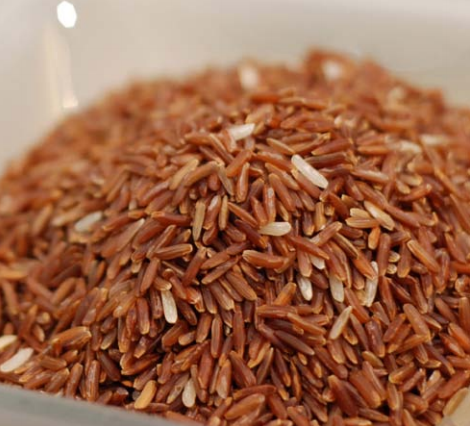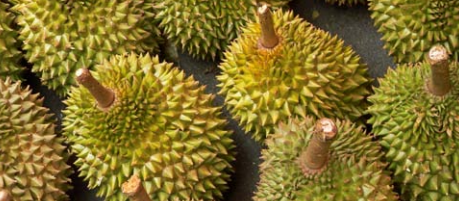I’ve written before about the US State Department’s new Culinary Diplomacy initiative – a (hopefully expanding) program using American chefs and American culinary traditions to reach out to foreign audiences. I’ve also written that culinary diplomacy isn’t confined to the US – just this month the South Korean government hosted a reception to promote Korean food in Abuja, Nigeria.
In fact, the US is actually late to the game when it comes to government-sponsored culinary diplomacy initiatives – 10 years late. In 2002, the Thai government launched “Global Thai,” a program to increase the number of Thai restaurants worldwide (source: The Economist). At the time, there were 5,500 Thai restaurants worldwide; according to the Thai government, today there are more than 10,000 (source: Thai Government Public Relations Department).
This is obviously an economic program – increasing the number of Thai restaurants abroad helps bring money to Thai chefs, prestige to Thai food, and tourists to Thailand. But it is certainly also a diplomatic program as well – each new Thai restaurant is an unofficial embassy, and an opportunity for public culinary diplomacy is established.
A second campaign, “Thailand: Kitchen of the World” was launched to further promote Thai cuisine abroad. An interesting eBook was published to promote the campaign, discussing the agricultural highlights of Thailand, promoting unique Thai products, teaching about the diet of Thailand, and sharing recipes for favorite Thai dishes. The book also talks about partnerships between the government and Thai universities that teach the culinary arts, and finally, the opportunity for Thai restaurants abroad to be awarded a “Thailand’s Brand” logo, indicating that they satisfy criteria set out by the government. This award reflects the government’s desire to spread and promote authentic Thai cuisine, which is an important aspect of the country’s nation-brand – a topic for another post. If you want to read more, check out this special report from the Office of Agricultural Affairs at the Thai Embassy in DC.

This is definitely different than the American program. Our government isn’t actively promoting American restaurants abroad (though one could easily argue that federal subsidies->cheap beef + high-fructose corn sugar->McDonald’s + Coca-Cola->American food taking over the world). Should we create a program similar to Thailand’s, though? Should we try to reclaim our own nation-brand from McDonald’s and KFC and give restaurants an “America’s Brand” logo if they have high business potential, use ingredients and recipes from the US, and accurately reflect what American cuisine is? (What is American cuisine? Topic for another post, of course). If a North Carolina-style BBQ place or a New England-style chowder place opens up in Bangkok or Abuja, should the embassy there promote it?
I’d love to learn more about the Thai projects. Many people I’ve spoken with about this have recalled some country they visited (most recently I heard about Iceland) with an overwhelming number of Thai restaurants. Where else has the Thai government targeted? How active is the program? If anyone knows, let me know!
If this is interesting to you, keep an eye out – I’ll post again about similar programs in Korea, Taiwan, and Malaysia.

4 Responses
James Knuckles
When I think of what is a typically American meal, I have a hard time concocting a mental image of a single dish. Instead, and I have had this conversation with many people while traveling abroad, I think what is truly — and uniquely — American is our weekly fare. Homemade tacos on Monday, pizza night on Tuesday, Thai on Wednesday, mom’s meatloaf on Thursday, late night Chinese on Friday, out for Italian with the family for Saturday night, and Sunday brunch at that new French place. Indeed, how many times have you asked a dinner companion, “what do you feel like tonight? Mexican? Italian? Chinese?” No, let’s try that new Ethiopian/Nepalese/Lebanese place on the corner…
For me, this is what it means to eat as an American eats. And this schmorgasboard of cultures present in the weekly eating habits of Americans represents more than just our love for variety. It’s about our national heritage of e pluribus unum. It’s about how we’ve been a land of opportunity for people from all over the world, and from all walks of life. Have you ever read the poem on the Statue of Liberty? It’s beautiful.
So maybe America’s culinary diplomacy could be about that poem. How we are a nation of diversity and opportunity. How the vast majority of entrepreneurs in this country are immigrants or first-generation Americans. How we are a cultural mishmash of people from every country on earth, and the very idea of what it means to be ethnically American changes every three or four generations.
But how can we project that image abroad when many of our politicians and many of the citizens that support them resist it, are blind to it, or choose to forget it? Perhaps culinary diplomacy should be targeted at home just as much as it is abroad.
samuelchapplesokol
“Perhaps culinary diplomacy should be targeted at home just as much as it is abroad.”
Yes, James! This is big. I touched on it a bit in my most recent post on Electioneering and Culinary Diplomacy, but haven’t come close to exploring it enough. Domestic Culinary Diplomacy. It’s what Michelle Obama and Sam Kass have been doing for the past 4 years with the Let’s Move! campaign, and it’s something that some chefs – José Andrés, with his America Eats project, and Sean Brock, who is trying to reclaim native seed varietals – are trying to do as well. Lots to think about here.
“Give me your hungry, your weak,
Your poorly fed masses craving good eats,
The famished with no bread to break.
Send these, the spiceless, pablum-fed to me,
I light my hearth and begin to bake.”
The Summit of Culinary Diplomacy: Le Club des Chefs des Chefs « Culinary Diplomacy
[…] Magazine) That’s just amazing. Thank you, Chef Comerford, for answering my question about what American food is – we […]
Embassy Chef Challenge | Culinary Diplomacy
[…] consider including some of their national cuisine to welcome visitors. I’ve discussed other tools before, and scholars like Mary Jo Pham and Paul Rockower have written great articles about […]